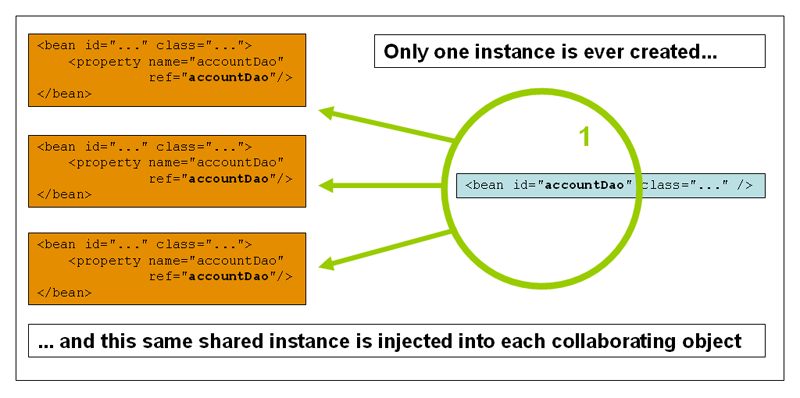4.5.1 The singleton scope
Only one shared instance of a singleton bean is managed, and all requests for beans with an id or ids matching that bean definition result in that one specific bean instance being returned by the Spring container.
To put it another way, when you define a bean definition and it is scoped as a singleton, the Spring IoC container creates exactly one instance of the object defined by that bean definition. This single instance is stored in a cache of such singleton beans(这种实例存储在这种单例beans的缓存中), and all subsequent requests and references for that named bean return the cached object.(所有后续的请求和对bean对象的引用都返回缓存的对象) 单例模式的特点

Spring’s concept of a singleton bean differs from the Singleton pattern as defined in the Gang of Four (GoF) patterns book. The GoF Singleton hard-codes the scope of an object such that one and only one instance of a particular class is created per ClassLoader. The scope of the Spring singleton is best described as per container and per bean. This means that if you define one bean for a particular class in a single Spring container, then the Spring container creates one and only one instance of the class defined by that bean definition. The singleton scope is the default scope in Spring. To define a bean as a singleton in XML, you would write, for example:
<bean id="accountService" class="com.foo.DefaultAccountService"/>
<!-- the following is equivalent, though redundant (singleton scope is the default) -->
<bean id="accountService" class="com.foo.DefaultAccountService" scope="singleton"/>
